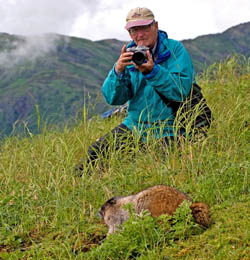 Taos is a historic and artist mecca in the upper middle of New Mexico. With an elevation of nearly 7000 feet, you will definitely feel the visit all the way down to your lungs. There’s plenty to keep you busy whether your hiking, painting or meditating. But save some free time tomorrow evening because Ben Goldfarb will be talking at the Harwood Museum about beavers and his new book.
Taos is a historic and artist mecca in the upper middle of New Mexico. With an elevation of nearly 7000 feet, you will definitely feel the visit all the way down to your lungs. There’s plenty to keep you busy whether your hiking, painting or meditating. But save some free time tomorrow evening because Ben Goldfarb will be talking at the Harwood Museum about beavers and his new book.
Talk targets beavers and ecosystems
 Environmental writer Ben Goldfarb will spend his October residency at the Aldo & Estella Leopold Cabin putting the final touches on a manuscript about the importance of beavers in restoring ecosystems.
Environmental writer Ben Goldfarb will spend his October residency at the Aldo & Estella Leopold Cabin putting the final touches on a manuscript about the importance of beavers in restoring ecosystems.
Goldfarb holds a master’s degree from the Yale School of Forestry & Environmental Studies – the same school that Aldo Leopold attended and was among its first graduates. And the Leopold Cabin sits across the valley from the historic seat of the beaver pelt trade in the early 1800s at Taos Pueblo.
“I can’t think of a better venue at which to complete my present project, ‘Song of the Dammed,’ a book about the ecological and hydrological benefits of North American beaver restoration,” said Goldfarb, who spent last summer surveying ranchers, scientists and public land managers about beaver restoration. “Northern New Mexico plays in integral part of the story I want to tell. And I’m happy to be invited to U.S. Forest Service property, as that is an agency that gets the importance of beavers the most.”
Ooh that’s so exciting! I wrote Ben yesterday to see if someone will be filming or taping the talk so the poor souls not in Taos could see it. He said he wasn’t sure and corrected that the books title is now “Beaverland”.
Goldfarb will present elements of his book, including a history of beavers in North America, the ways beavers influence restoration, and several case studies that support his findings at a presentation planned Wednesday (Oct. 4), 7 p.m., at the Harwood Museum of Art, 238 Ledoux Street in Taos. The presentation is free and open to the public.
The Aldo and Estella Leopold Residency began in 2012 as “an inspiring retreat for writers to reflect and create in the home where Aldo and Estella Leopold first lived as newlyweds from 1911-12,” a press release states. “Now in its 6th year, the Leopold Writing Program selects one to two writers for one-month-long residencies, depending upon funding. Participants receive a $500 stipend to help defray travel and living expenses. In exchange, residents give a public presentation of their work in Taos.”
Past residents include Courtney White, John Hausdoerffer, Bonnie Harper-Lore, Leanna Torres, Gavin Van Horn, Tovar Cerulli, Priscilla Solis Ybarra, Andrew Gulliford, Maya Kapoor, Andrea Clearfield, and Ariana Kramer.
Could Ben be in better company than the spirit of these great writers? I don’t think so. He asked me what I thought of “Beaverland” as a title and I said it was nice maybe kind of similar to “Beaver World” and Enos Mills territory? My personal inclination would be more to something about the way they are an extremely unappreciated resource that gets ignored. Like “Untapped” or “Unsung” or more specifically focused as to their function, “Water-Savers”. 
I also tossed out the notion I had been toying about thinking of beavers as “Stream-catchers” (playing off the idea of dream catchers being the Ojibwe belief of the woven hoop you place near the infants crib to keep out the bad dreams) Maybe the beaver dam itself is the web? Keeping out flooding and drought, and the stream that it brings are the ‘good dreams’ vibrant with fish and full of life?
Ben liked that idea and thought it might become a chapter, so we’ll see what happens. In the mean time I’m excited that beavers get a book and Ben gets to talk about it tomorrow night.


 Yesterday I was asked by Michael Howie of
Yesterday I was asked by Michael Howie of 










































